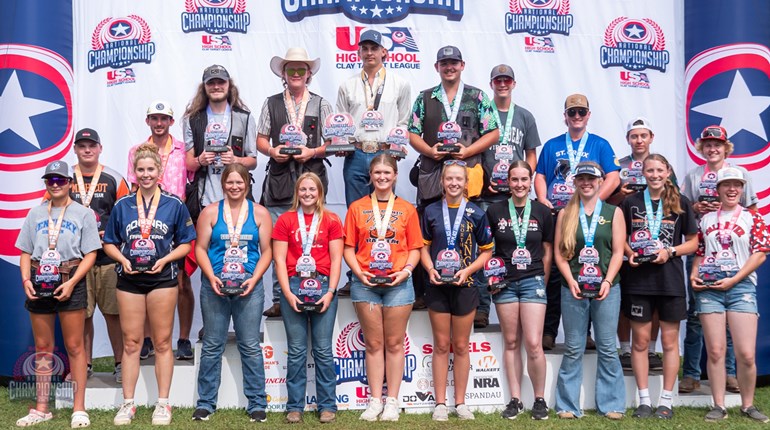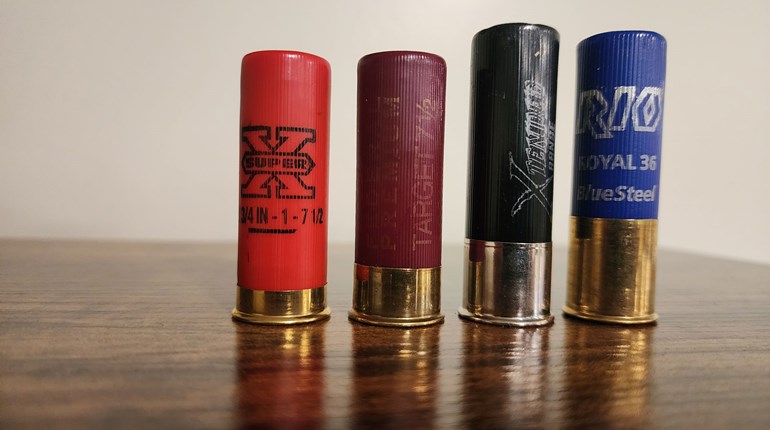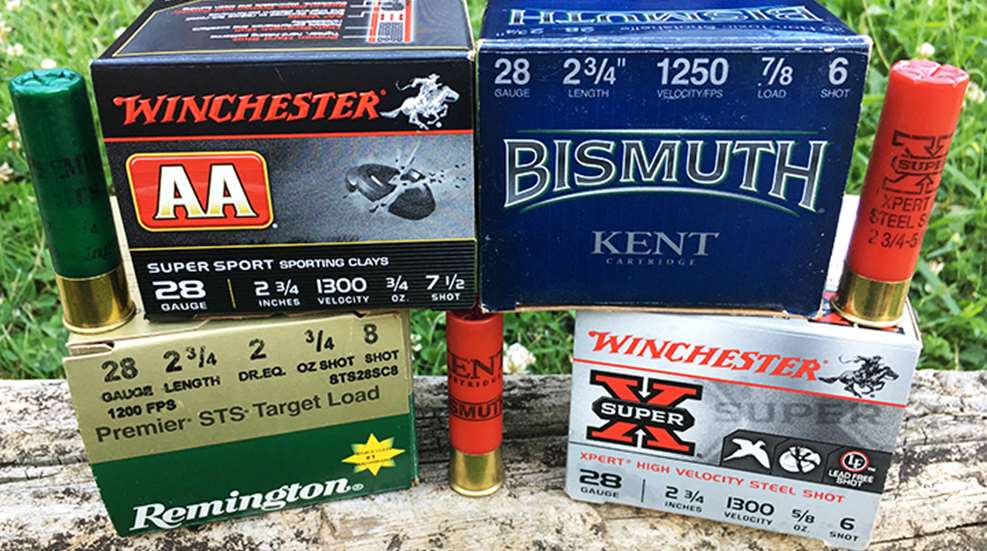
Being candid, I was reluctant to follow the recommendation of my fellow gun writer. As a longtime admirer of the ubiquitous 20-gauge, I knew it capabilities—well. To me, it made little sense drifting from the known for the then-unfamiliar, and the thought of doing so made me uncomfortable—especially when abroad. He was adamant, though, and through positive peer pressure convinced me that the petite 28-gauge would sacrifice nothing to the 20 in those Cordoba, Argentina, fields. He was right. When targeting the seemingly limitless doves, pigeons and other crop raiders at realistic ranges, there wasn’t one that was safe from over-under barrels of the 28-gauge Beretta I clutched.
In several days’ time, I expended nearly 5,000 20- and 28-gauge shells, with roughly two-thirds of those being the latter. As it accounted for a great number of birds, I learned not to underestimate capabilities of the wee 28.
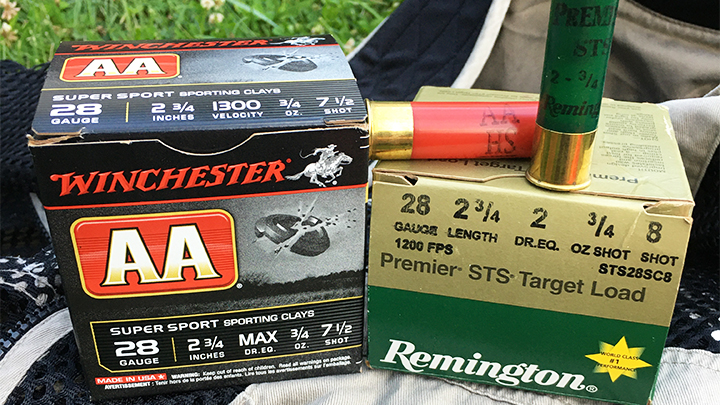
Background and Specifics
Minimal has been written about the 28-gauge’s background, and much of it is fairly vague; however, one thing is for sure: it’s not new. In fact, according to Cartridges of the World, 13th Ed., “The original blackpowder [my emphasis] loading used a 2½-inch shell with 1¾ drams of powder and ⅝-ounce of shot.” It appears to have originated in Europe before crossing the Atlantic in the late 19th century. It wasn’t until a handful of well-known gun makers began chambering it in the early 20th century that the pint-size gauge gained popularity—relatively speaking, of course. It was never a 12-, 20- or even 16-gauge, though there’s much renewed interest.
According to the American National Standard Voluntary Industry Performance Standards for Pressure and Velocity of Shotshell Ammunition for the Use of Commercial Manufacturers, “the bore diameter of the 28-gauge, 2¾-inch shell is 0.545-inch + 0.20-inch.” Note the standardized 2¾-inch part; no mainstream manufacturer now chambers a 28-gauge shotgun with a shorter length, though there is the 3-inch variant that emerged in recent times. That one leaves me perplexed.
Let’s focus on the 2¾-inch variant, which has a maximum average pressure (MAP) of 12,500 psi. To put that pressure into perspective, it’s only exceeded by the 12-gauge, 3½-inch (14,000 psi) and the 3-inch .410-bore (13,500 psi), and it is equaled by the 2½-inch .410-bore. Due to its high pressure—by shotshell standards—the shell provides performance out of proportion to its size. For instance, 2¼-dram loads will propel ¾-, ⅞- and 1-ounce payloads of lead shot to 1295, 1250 and 1205 fps, respectively. You’ll note that the velocities of the ⅞- and 1-ounce loads parallel many target and/or light field loads in 12-gauge.
Despite the aforementioned ballistics, the 28-gauge is often lumped together with the smaller .410-bore—especially the 3-inch. It’s an unjust correlation, as the former propels larger quantities of shot, and it’ll pattern better, too. It would be properly be paralleled by the 2¾-inch 20-gauge. The ballistics are near identical, though by virtue of its larger hull, the 20-gauge can handle a 1⅛-ounce payload of lead shot. Using lead shot, the 28 maxes out around 1 ounce.
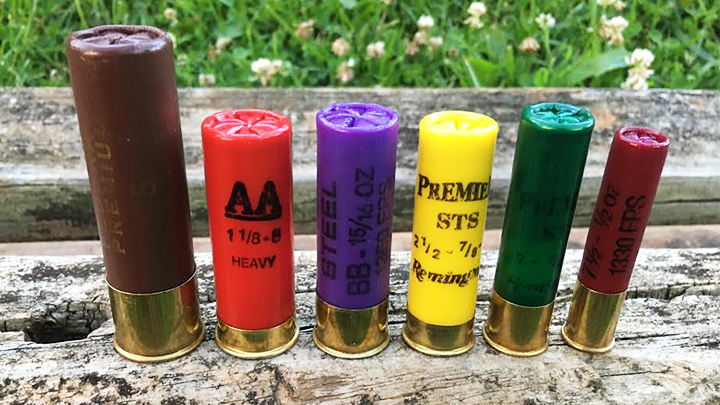
Ammunition Choices and Cost
The 28-gauge is more frequently employed for clays sports than it is for hunting. This especially holds true for FITASC and sporting clays, where it’s used in small-gauge and 28-gauge-only events. As such, many of the ammunition options are designed for, and marketed to, clays shooters. Like any other gauge, though, provided that the proper shot size is selected, these loads can pull double duty for small upland species, such as squirrels, rabbits, doves, quail, chukar, woodcock and even ruffed grouse; however, I wouldn’t advise their use on pheasant.
Standard target loads, such as the Winchester hallmark AAs, propel ¾-ounce of high-antimony “magnum” (i.e. hard) No. 8 or 9 shot to 1200 fps, while the Supersport Sporting Clays variant attains 1300 fps with ¾-ounce of No. 7½ shot. Available in No. 7½, 8 and 9 shot, Federal Premium’s Top Gun Sporting shells propel the same payload to 1330 fps. Remington, Fiocchi, and Baschieri & Pellagri all have target loads.
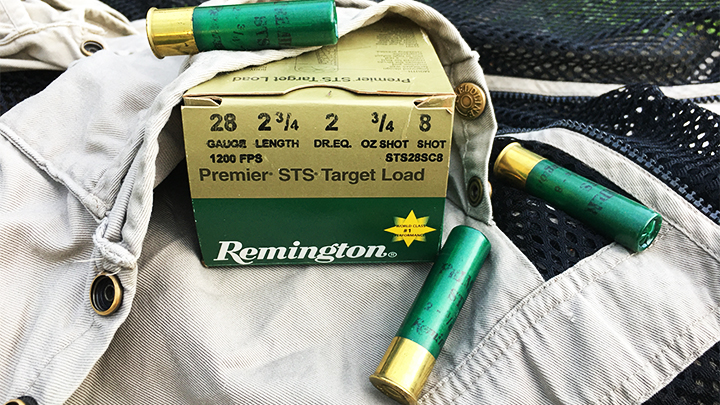
Given the light weight and pointability of true, scaled-down 28-gauge shotguns, they are a natural choice for long treks in pursuit of pheasants, sharp-tailed grouse and prairie chickens. Since these birds tend to flush at greater distances—and are hearty to boot—standard target loads are poor choices. Fortunately, there is a good selection of “magnum” 28-gauge shells available, though they feature lead shot. Here are a few: Baschieri & Pellagri has 15/16 ounces of No. 7½s at 1300 fps; and 1 ounce of No. 5, 6 or 7½ shot at 1210 fps. In the Wing-Shok series, Federal employs ¾-ounce of No. 7½ or 8 copper-plated lead shot at 1295 fps. The plating increases lethality through enhanced penetration. Better yet, the company’s Heavy Field line has 1 ounce of No. 5, 6 or 7½ shot at 1220 fps. Winchester has similar options, albeit propelled to 1205 fps. Fiocchi has ¾ ounce of nickel-plated (preferable to copper) No. 5, 6 or 7½ shot driven to 1300 fps in its Golden Pheasant series. Remington has options alike those above.
Leadless options are limited in 28-gauge, but they do exist. An unfortunate consequence of being a small bore, though, is minimal payload space; that’s especially problematic when large steel shot is needed to overcome the material’s low density (and thus weight) to maintain lethality downrange. Most 28-gauge steel loads feature ⅝ ounce of No. 6 or 7½ shot, which is sufficient for small ducks—teal, wood ducks, buffleheads, etc.—at close range. Federal’s Upland Steel shells propels said shot to 1350 fps, while only No. 6—at the same velocity—is available in the Speed-Shok waterfowl line. No. 6 steel is propelled to 1330 fps. in Federal’s Steel & Target and 1300 fps in Winchester’s Super-X Game & Target round. They’re virtually all the same.
If you’re serious about waterfowling with a 28-gauge, only use high-density shot. It significantly improves terminal performance and increases your effective range. My son and I have cleanly taken Atlantic brant, scoters, old squaw, mallards, buffleheads, bluebills and other species; however, you must use quality loads, and know your gun/ammunition’s limitations. I prefer the following shot types and sizes, which I handload: No. 5 and 6 bismuth; No. 4, 5 and 6 Hevi-Shot; No. 4 or 6 ITX Extreme-13; No. 7 SpheroTungsten Original-15; or No. 7, 8 or 8½ tungsten super shot (TSS, a.k.a. SpheroTungsten Maximum). Everything you need to handload can be found at Ballistic Products, Inc. The latter have been a game changer for the 28-gauge.
As for factory loads, Kent Cartridge has Bismuth Upland, which propels ⅞ ounce of No. 6 bismuth shot—9.6 gr/cc—to 1200 fps. Hevi-Shot loads 1 ounce of No. 4s at a sizzling 1350 fps, and for the well-heeled, the manufacturer also offers ¾ ounce of Hevi-Shot No. 4s or 6s at 1300 fps. They’re around $4 each.
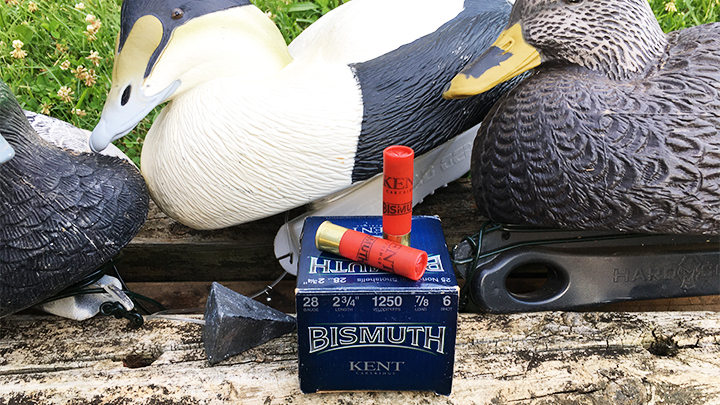
The 28-gauge has limited space for pellets; fortuitously, heavy, high-density pellets, such as TSS, fit nicely into small spaces, and they’re amazing lethal at formerly unimaginable distances. It’s truly the proverbial “game changer.” Need evidence? Thanks to TSS, the 28-gauge is now considered an excellent turkey gun. That’s right; it’s more than capable of dropping a distant tom—provided that you have the correct ammunition. Apex Ammunition was the pioneer in loading TSS, and it’s still the only one that does so (not including custom loadings). The company fills the 2¾-inch 28-gauge shell with 1⅜ ounces of No. 9 or 9.5 TSS shot, and in the Turkey Ninja TSS series, it has 1⅜ ounces of No. 8.5 shot. The latter attains 1040 fps, and it’s lethal at former 12-gauge-only distances.
As evidenced above, there are sufficient ammunition options available to 28-gauge owners. The biggest complaint is cost. As with the .410-bore and 16-gauge, expect to pay a premium for the low- to moderate-demand shells. First-class 28-gauge target loads run nearly double the price of economy 20s and 12s, but such is not the case with heavy game, pheasant, waterfowl and other “premium” shells. Those tend to be priced similarly.
Shotguns
What’s ammunition without the shotgun, right? Until recently, scatterguns chambered in 28-gauge consisted mostly of high-priced over-unders intended for the opulent, along with an occasional, limited-run variant of a popular model. Fortunately, times have changed. Likely spurred by technological innovations in ammunition, now it’s easy to find a 28-gauge that is well suited for hunting and priced for the masses. Here are some options.
For hunters interested in a new semi-automatic shotgun, 26-inch-barreled versions are available from TriStar (Viper G2 Wood) and Mossberg (SA-28 All-Purpose Wood). Twenty-eight-inch-barreled autoloaders can be had from TriStar (Viper G2 Bronze and Silver) and Pointer (Cerakote with Wood and standard Wood variants). Mossberg has the 24-inch SA-28 Youth Bantam All-Purpose Field for budding hunters. Once you cross the $1,000 mark, options can be found in Beretta and Benelli’s lines, too. For pump-action fans, I could only find the Browning BPS Field.

Budget-friendly over-unders and side-by-sides in 28-gauge are relatively common. Stacked barrels featuring 26-inch tubes included the Stevens Model 555 and 555E, as well as the Mossberg Silver Reserve II Field. Want two extra inches of barrel length? The TriStar Trinity LT, TT-15 Field or CZ-USA Drake will fit the bill. Only the Stevens Model 555 Compact has 24-inch barrels. Side-by-sides include the Stoeger Uplander Field and Charles Daly 528. Only a Pointer over-under was camo-clad; in this case, it was Mossy Oak Blades.

The above guns are some of what’s currently available. Astute shoppers, however, can locate others on the used market, such as previous limited runs from Remington (i.e. Model 1100), H&R, etc.
The 28-gauge is misunderstood and underestimated by many shooters and hunters. I used to be one of them. That’s because its performance belies its small size. If you’re willing to take risk and try one, I’d be willing to bet that you, like me, will become a believer in the great 28.












